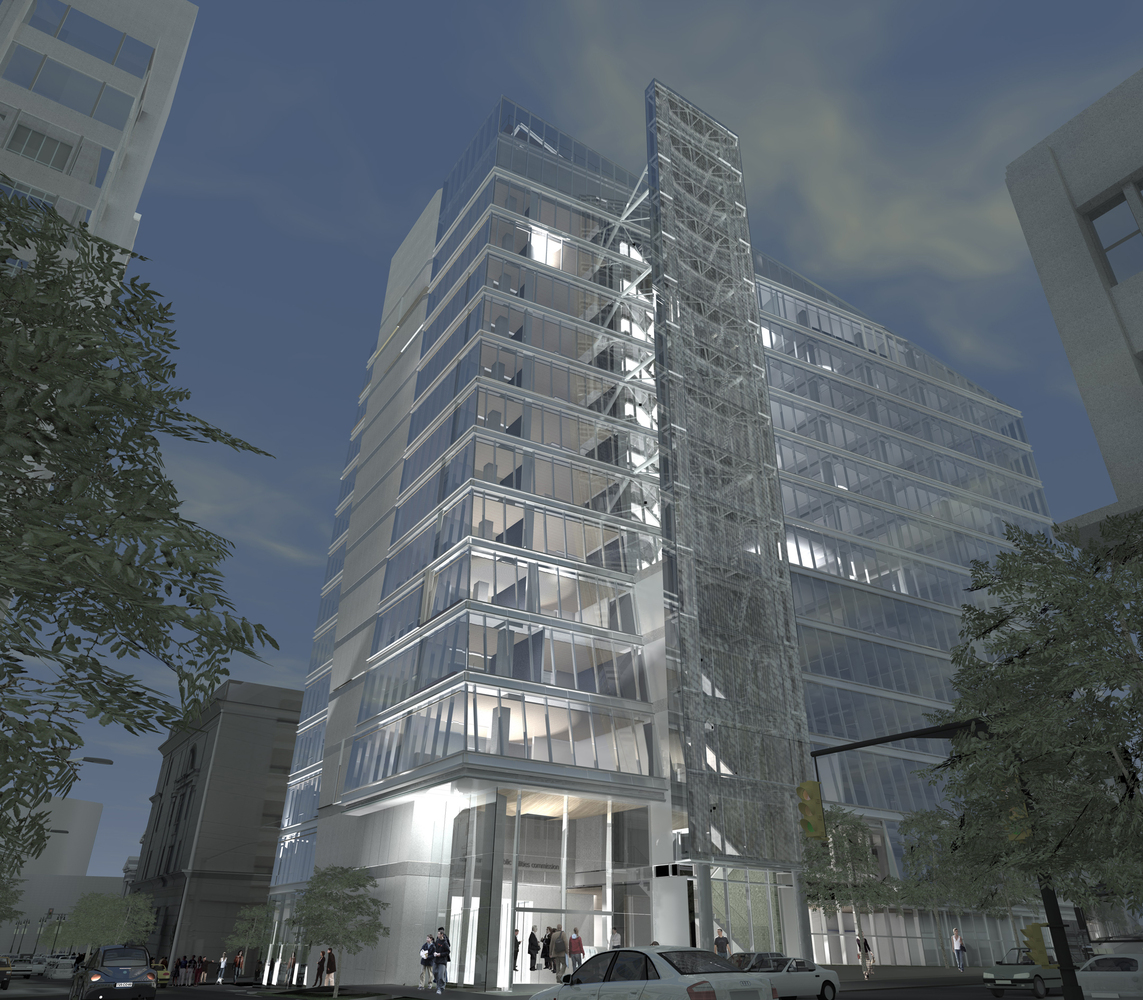Project Info
Architects: KMD / Stevens + Associates
Location: San Francisco, California
Project Size: 277,500 SF
Structural Engineer: SOHA Engineers-Tipping Mar
General Contractor: Webcor
estimated Construction cost: $190 million
Ground Breaking Date: Oct. 21, 2009
Completion date: July 2012
Sustainable Design Elements: Photovoltaics (PVs), Recycled Materials from demo of existing building, Wind Turbine Tower and Wind Turbines on Roof, Water Recycling Plant on Site, Grey Water Reuse, Passive Exhaust, Maximized Glazing, Performance Glass, Operable Windows, Raised Floor
LEED Certified Project Designer: KMD/ARUP/Lynn Simon

Introduction
The PUC Building on 525 Golden Gate Ave, home of the San Francisco Public Utilities Commission, could have been just another government administrative building. But, the City and County of San Francisco, along with KMD Architects, embraced the design challenge of achieving LEED Silver status. Now nearing completion, the building is expected to exceed LEED Platinum requirements and has been dubbed the greenest building of its kind. The architects had humble goals for the architecture as well, which included creating an “urban room” among the civic buildings in the area, creating a healthy and pleasant environment in the interior workplace to promote performance, efficiency and comfort, and represent the best value possible for the city and county of San Francisco.

Details
This 13-story, 277,500-square-foot building will house the new offices of the San Francisco Public Utilities Commission. It will provide work spaces for the government agency in a building that represents efficiency and thoughtful planning of its future impacts. In order to achieve the maximum comfort for the occupants of the building, and provide the best performance, KMD incorporated practical advanced technology to automate systems, improve material efficiency and enhance communications within the building. The architects also incorporated natural climate control and lighting with artificial lighting as necessary. They also maximized glazing to enhance exterior views and natural day lighting.

The urban setting is important to the design of the overall building. It aligns with the street wall and is scaled to fit within its context, enhancing the feeling of the “urban room”. The architects designed the building to harmonize and balance within the context of the Civic Center in order to maintain an urban character. The building is compact in its envelope so as not to overshadow adjacent spaces and parks.

The building envelope was designed to naturally ventilate the open office plan. It is designed to breath; at night excess heat from the building is vented out through the building envelope, cooling the thermal mass. The floors are raised in order to enhance ventilation thereby improving indoor air quality. Light shelves designed along the facade direct light deep into the space, while shading portions of the glazing. Photovoltaics and wind turbines are also incorporated to gather energy from the sun and wind, producing 40% of the building’s energy demands. The vertical wind turbines were designed to draw and accelerate the wind, creating more energy. The turbines are incorporated into the facade, becoming part of the architecture. Black and gray water will be reclaimed and treated in a water treatment facility. The fixtures are low flow to minimize water waste.





